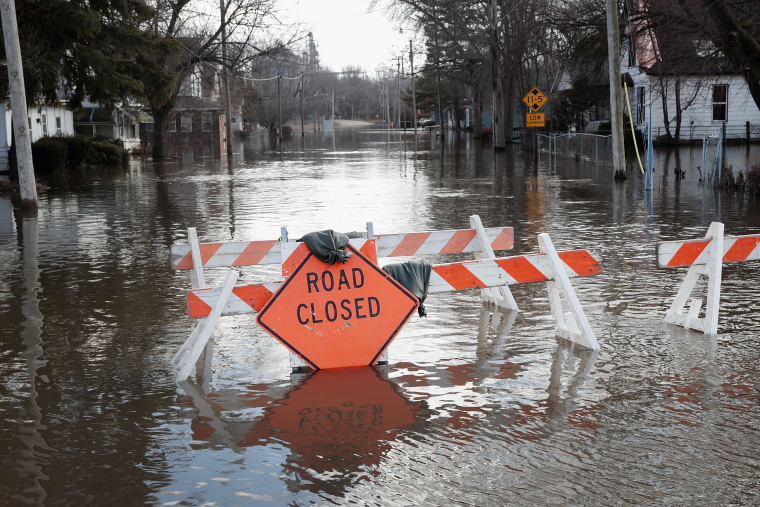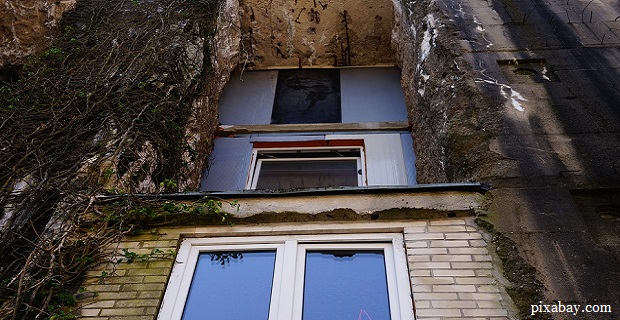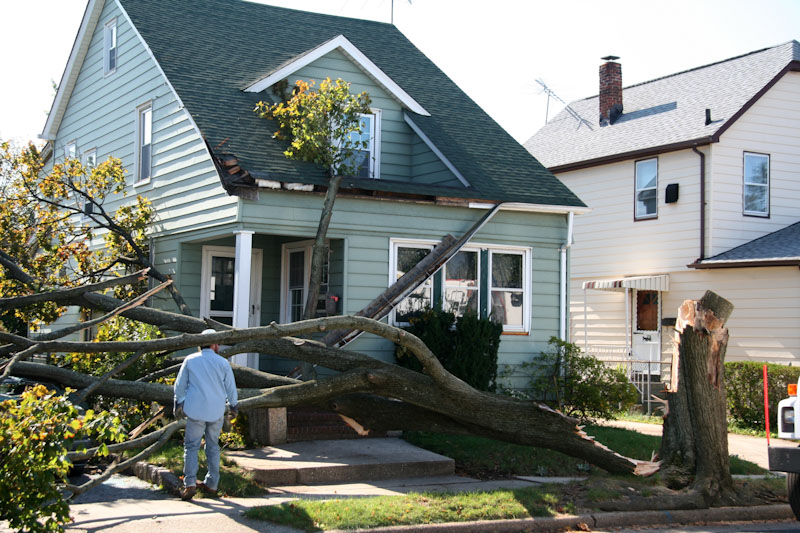Of all our survival needs, shelter is high up on the list.
It is shelter, along with clothing and heating, which helps us to maintain our body heat, regardless of how frightening the weather outside might get. This explains why we all collectively spend roughly one-third of our income on housing, whether that is buying a home, renting one, renting an apartment, or even paying for a trailer to live in.
But what makes a house, or any of those other things I mentioned, work as a shelter?
Basically, it’s three things:
- The ability to keep the rain off our heads
- The ability to block the wind
- The ability to hold in or hold out heat
While there are a lot of other factors that go into home design, it is those three things that have dictated the basic design concepts of homes since the beginning of time. It doesn’t matter if you’re talking about living in a cave, a Mongolian Yurt, or a modern home, the walls and roof are there to accomplish those three basic tasks.
Everything else about home design is about making the space more comfortable to live in.
This is Why Conventional Preparedness Wisdom is Deadly!
Homes Under Attack
But as the recent spate of hurricanes has proven, not all homes are created equal. Sadly, many of the homes in Houston, Florida, Puerto Rico, the Virgin Islands and other Caribbean Islands were severely damaged or even destroyed by the winds and flooding that those hurricanes wrought.
Granted, many of the homes destroyed in those hurricanes were not built to American standards, or even to the International Building Code standards. That’s because most of the homes that were destroyed belonged to the poorer people living in the islands, who build their homes however they can, out of whatever materials they can and with no attention to the building code.
But to be honest, American homes are hard pressed to survive such an onslaught, and many of those didn’t fare all that well either. The basic problem in those cases is usually flooding, which American home building techniques and the materials we use, can’t handle.
By comparison, I’ve spent a fair amount of time south of the border, in Mexico. Rather than being built out of wood, like our homes are, most of theirs are built out of cement block, with tile floors. While that may not make for as attractive a house, and it definitely doesn’t make for as well insulated a home, it does make a home that is much more water resistant. When those homes flood, it’s a mess to clean up, but that’s about it. They don’t have to tear out drywall, insulation, carpeting and underlayment.
If we were to adopt their building techniques, we would have homes that were much more resilient to hurricanes and other natural disasters. But there are tradeoffs as well, especially in the area of keeping our homes cool in the summer and warm in the winter.
The only problem with that idea, is that most of us already have our homes built. So it would be impractical to build ourselves new homes and abandon our old ones.
With that in mind, what we really need to do is find a way to improve our existing homes ability to withstand the forces that nature can bring against them.
How Does Nature Damage Homes?
There are actually quite a number of different ways in which nature can damage our homes. Each natural disaster has its own damage it can produce. Even normal storms can cause damage. Allow me to briefly summarize this damage:
- Hurricanes: High winds can tear off roofs, blow out windows, and even flatten walls. Flooding can weaken foundations and damage the materials the home is made of, especially on the interior of the home.
- Tornados: Even higher winds than hurricanes produce can tear off roofs, drive loose objects through windows and some walls, and generally tear things apart.
- Flooding: As with hurricanes, flooding can damage the materials the home is made of, requiring major rebuilding, as well as undermining the foundation.
- Earthquake: Literally shakes the house to pieces.
- Hail: Damage to roof shingles.
- Wildfire: Burning the home down; many of the materials our homes are built from are flammable.
Of course, it’s unlikely that your home is in a place where you are subject to all of these possibilities. It seems that some parts of the country are more susceptible to some, while other parts of the country are more susceptible to others.
Nevertheless, while some of these forces of nature are so severe that there is nothing we can do about them, there are others which we can effectively combat, protecting our homes from damage and destruction.
Protecting Your Home from the Ravages of Nature
With all this potential for damage and destruction, it only makes sense to ensure that our homes are as well protected as possible. After all, for most of us, our home is our biggest investment. With that in mind, it only makes sense to take good care of it.
While there are specific actions that we can take to ensure the soundness of various parts of our homes and their ability to withstand damage, it should be noted that the overall maintenance and condition of your home is important. The better condition that your home is in, the more likely it will be to sustain rough weather, without damage.
Much of the damage which can happen to our homes starts with one loose board, shingle or brick. Wind or rain gets in there and the damage can spread. This can take minutes or years, depending on the nature of the damage and the severity of the weather.
But if we can deny the weather that first opening, we can avoid a lot of damage.
Windows
As we all know, glass is fragile, easy to break. Yet we still use glass windows for our homes, mostly because there really is nothing better to replace them with.
Oh, I suppose you could replace your glass window with a polycarbonate material, like Lexan, which is considerably stronger than glass, as well as more expensive, but even Lexan can be broken by objects driven by the wind.
Nevertheless, this is one option to consider.
Some people recommend taping windows with masking tape or packing tape to keep them from breaking, but that doesn’t work.
There are two basic problems with that. The first is that the tape only makes contact with a small amount of the window’s surface area, so the rest of the window can still bust out. The second is that the sun bakes the adhesive from the tape onto the window, making it hard to remove it.
The best way of protecting windows is probably the oldest, shutters. People have been using shutters to protect their windows since before glass was used in them. They aren’t all that popular today, but if you have shutters on your home; real shutters that is, you’re ready to protect it.
If you don’t have shutters, you can simulate them by cutting pieces of plywood and putting them over your windows. That’s quite effective in the face of a hurricane; but there usually isn’t enough time to even bother when there’s a chance of tornadoes.
Even thin plywood will offer a lot of protection to the glass, helping prevent it from being broken.
The other option is to add security window film on the inside of the windows. This is something like window tinting film, but it is clear and thicker than tint. What it does, in addition to making the glass stronger, is keep the glass in place, should it get broken, much like a car’s windshield is designed to stay intact, even when it is shattered.
Roofs
After windows, the roof is the most vulnerable parts of your home. Hail can fall upon it, causing damage and high winds from hurricanes or tornadoes can lift it right off the home, more or less intact, depositing it some distance away. It can also be damaged by tree limbs falling on it, as they break off of trees.
The typical asphalt or fiberglass tiles we use for roofs today are not the best roofing material you can buy. Nor is a typical two-sloped roof the best design. Roofs made with two opposing slopes leave vertical walls at the gable ends. In contrast, a hip roof, with four or more sloped surfaces, eliminates this problem. Eliminating the gable ends eliminates the large sail area for the wind to push against.
Standard two-sloped roofs can be converted to hip roofs by removing the trusses at the ends and framing in the hip roof portion. Any framing contractor can do this work. While it might be expensive, it wouldn’t be anywhere near as expensive as replacing the roof.
The biggest wind force working on a roof is updrafts. This is caused by wind hitting the wall of the home and looking for the easiest direction it can travel. Those updrafts catch on the roof overhang, pushing up on it and sometimes even tearing the roof off, lifting it right off the house. A smaller amount of overhang, with narrower soffits reduces this risk.
The other thing that should be done with roofs is to have the trusses installed with hurricane clips. These are metal straps, which attach the trusses more firmly to the wall structure, fighting against the propensity for the updraft to lift the roof off the home.
Another thing to consider is changing your roof shingles, replacing them with another material, which is less susceptible to damage. Of all the common roofing materials used, metal roofs are the best for this. Even if they become pock damaged by hail, it will not affect the ability of the roof to protect the home.
Finally, if you have any trees, whose branches overhang your home’s roof, you should cut off those limbs. This is especially true of old or diseased trees, where the branches might be weak and susceptible to breaking in high winds. A tree limb falling on your roof can do a lot of damage.
Exterior Walls
The exterior walls of your home are much less likely to become damaged than any other part. However, there are some things that can happen, especially if your home is not properly maintained.
High winds can peel off wood, aluminum or vinyl siding. All they need is a loose corner or edge. The corner trim on your home is intended to protect against this, so you want to check that your corner trim is firmly attached, that the siding does not extend out past the corner trim and that the siding is attached firmly to the home.
It’s also a good idea to caulk the seam between the siding and the corner trim. A good painter will do this when the home is painted. If you paint your home yourself, be sure to include this in your prep work.
Flooding

Our homes are not designed to be boats or dams, withstanding the rising waters. Even so, there are some things that we can do.
Brick homes withstand flooding better than wood-sided ones do, as the brick is not as badly affected by the water. It also makes a better barrier against water, if it is properly sealed.
However, most brick homes will have spaces between bricks, near the bottom of the wall, which are not filled with mortar. This is done to allow vents for equalizing air pressure, as well as places for water to drain out of the wall. For the wall to be waterproof, these must be filled.
Even with this done, water can get into your home, simply by flowing under the doors. This is why most people who live in hurricane zones will put sandbags in front of their doors, anytime a hurricane is on the way. If you don’t have sandbags, the same thing can be done by filling kitchen trash bags 1/3 full of water, and attaching the drawstrings for those bags to the door frame, holding the bags up. The water in the bags turns the bags themselves into very effective barriers against minor flooding.
Of course, that’s only going to work for low-level flooding, say a foot or less. For more than that, you’d need to have either a sandbag wall running all the way around your home, an earthen berm, or one of the inflatable water dams (inflate with water), which have been designed to replace sandbag walls.
There are farmhouses and whole towns in North Dakota, which have been built with an earthen berm all the way around them. This was done to combat the annual spring flooding that happens there. It floods a lot because the nearby river dips south, and then turns north again, before going back south. So, that point where it turns back north stays frozen, while the farther south parts thaw, effectively putting a dam across the river and causing flooding.
Regardless of whether sandbags, inflatable dams or an earthen berm is used, the barrier must be out away from your home, leaving at least a three foot gap for you to walk through, checking for leaks. Some leaks are likely to happen, so you should have transfer pumps, which you can use to pump that water back out over the barrier.
While adding this sort of barrier is a expensive, as well as a lot of work, it’s the only sure way of protecting your home from flooding. So, if you are living in an area which is prone to having problems with floods, this is something that you might want to consider.
Overall, having a shelter is one survival need you have to start with. Now check your home and see if you can call it a safe shelter.
If it’s not, what do you expect to turn it into one?












james white | October 23, 2017
|
I have an uncle somewhere, named Bill white, that I haven’t seen or heard from in 50+ years. My father’s name was morris (now passed away). Would you, by any chance, be that uncle?
Survivopedia | October 24, 2017
|
James, I wish I could give you a good news, but I’m afraid our Bill White is not the person you’re looking for. Bill White is a pen name because our writer is also a prepper, and really wants to protect his privacy.
I hope you’ll find your relative one day. 🙂
Tom Jackson | October 25, 2017
|
I’d suggest that you do your DNA with ancestry.com and see if someone from his branch shows up. I have found multiple cousins in this way.
James White | October 26, 2017
|
Thanks, all, for the feedback! 🙂
DannyBoy | October 19, 2018
|
Think twice before turning over your DNA to Anyone! Sure they offer a service linking you to possible relatives and such but if you don’t think that your DNA is being Logged, filed & added to a Database your kidding yourself. They can not only Use this to Identify anyone through DNA but can also determine which of Us carry genes linked with Diabetes, Cancer, Drug addiction, mental illness, literally almost all major health, mental issues know to medicine so is it a Far leap to think someone might rise to power who believes it a Hood Idea to create a Perfect Healthy Stable Society & Do away with Damaged DNA?? It wouldn’t be the First Tile we seen such a Monster ride to power and attempt “The Perfect Race” doing away with what He deemed Imperfect.. Think twice before Handing out your DNA to anyone.!
Nicc | October 23, 2018
|
Exactly my thoughts!!!!!
BrianS | November 15, 2018
|
There have been some concerns published recently that when only 2% of the populations DNA is known then it will be possible to work out the DNA of almost anyone by their relatives. They think that some places in the world could see that happening in just a few years.
The privacy consequences are shocking when you think about it especially if there isn’t legislation in place to stop the misuse of such information by commercial entities such as health & insurance organisations.
Regards,
Bran.
Bill in Idaho | October 20, 2018
|
Hello, Bill. I often wonder . . . Homes and brick businesses (Not in the Coastal Areas -or- in the “Tornado Belt”) are Still being built on “10 year” “Flood Plains” ! ! North of us, in the Boise Area, about 25 to 30 Thousand homes (the pricer ones) are built on the Boise River “10 Year” Flood Plain. Most Insurance coverage Does Not include Flood coverage. Is thinking and planning too strenuous ?